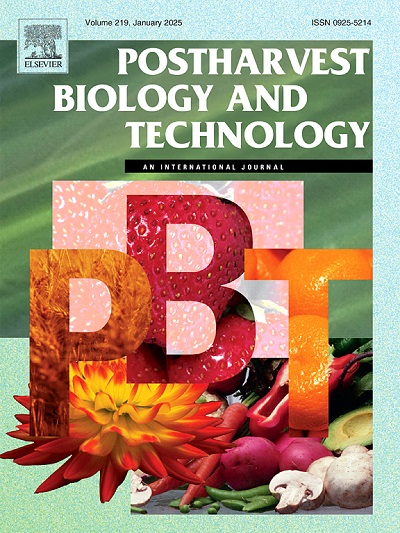Development of shelf-life prediction models and programs for 'Xuxiang' kiwifruit stored at different temperatures
IF 6.4
1区 农林科学
Q1 AGRONOMY
引用次数: 0
Abstract
The perishability and microbial contamination of fresh kiwifruit reduce its shelf-life, and the thick skin and deep color make it challenging for consumers and merchants to assess its freshness visually, resulting in losses. Relevant predictive models are crucial in minimizing losses by quickly determining the shelf-life. The appearance, physiological and biochemical properties, and microbial populations of kiwifruit stored under different temperatures were assessed through simulated storage. Shelf-life prediction models were developed based on deterioration quality using a combination of dynamic and Arrhenius equations, as well as total mold and yeast changes using a combination of the Gompertz model and Belehradek equation. Furthermore, a shelf-life prediction program was established for both types of models using Python, and the accuracy of the models was validated and compared. The results indicated that the quality index based on the zero-order kinetic model fits better. The average relative errors of the shelf-life prediction model were all below 10 % except for the weight loss, and the prediction accuracy of the model based on L* was the highest. The average relative error in the shelf-life prediction model based on total mold and yeast count was within 25 %. This study can provide theoretical support for developing shelf-life prediction models and reducing postharvest losses of kiwifruit.
求助全文
约1分钟内获得全文
求助全文
来源期刊

Postharvest Biology and Technology
农林科学-农艺学
CiteScore
12.00
自引率
11.40%
发文量
309
审稿时长
38 days
期刊介绍:
The journal is devoted exclusively to the publication of original papers, review articles and frontiers articles on biological and technological postharvest research. This includes the areas of postharvest storage, treatments and underpinning mechanisms, quality evaluation, packaging, handling and distribution of fresh horticultural crops including fruit, vegetables, flowers and nuts, but excluding grains, seeds and forages.
Papers reporting novel insights from fundamental and interdisciplinary research will be particularly encouraged. These disciplines include systems biology, bioinformatics, entomology, plant physiology, plant pathology, (bio)chemistry, engineering, modelling, and technologies for nondestructive testing.
Manuscripts on fresh food crops that will be further processed after postharvest storage, or on food processes beyond refrigeration, packaging and minimal processing will not be considered.
 求助内容:
求助内容: 应助结果提醒方式:
应助结果提醒方式:


